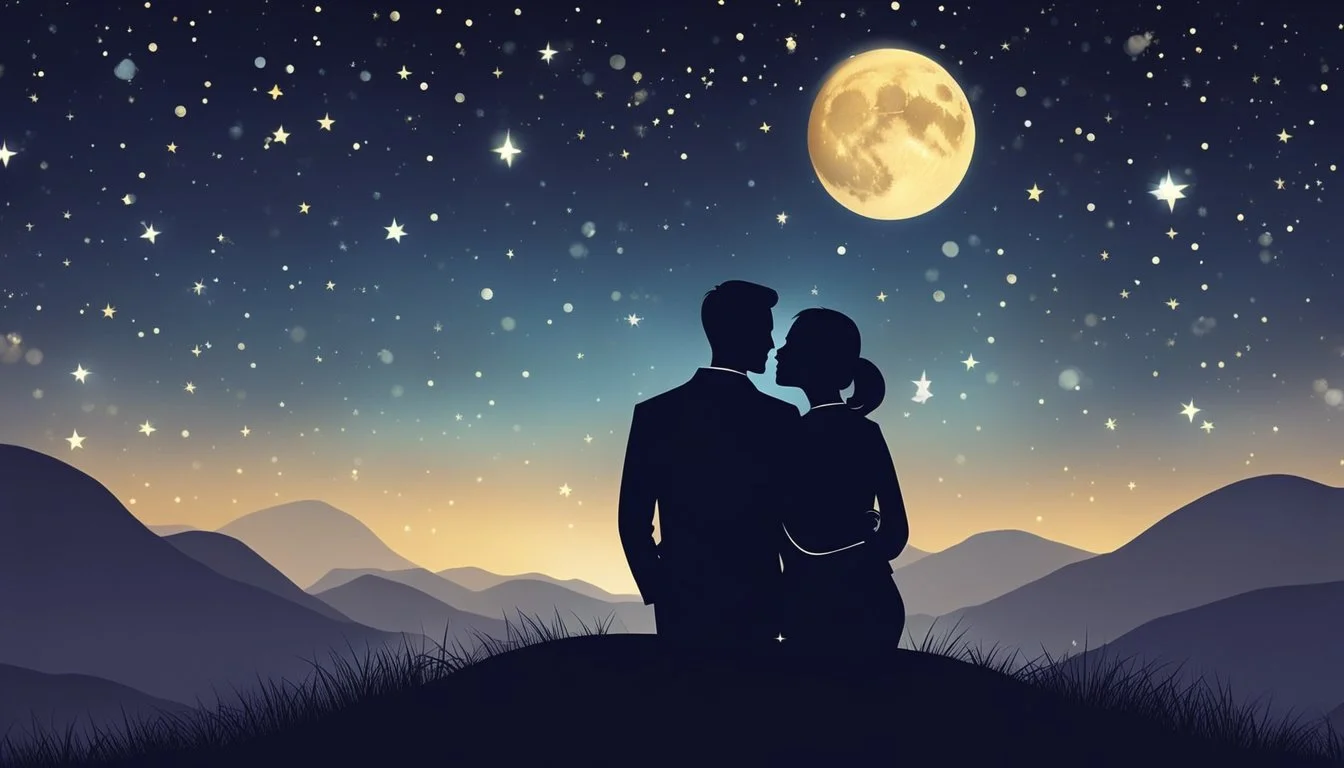Crafting Compelling Romantic Subplots in Narrative Films
Techniques and Insights
Crafting compelling romantic subplots in narrative films requires a nuanced approach that goes beyond merely adding variety or appealing to a broader audience. A well-executed romantic subplot not only enriches the story but also illustrates the progression of the protagonist's character arc. By highlighting the protagonist's internal growth through their romantic relationships, the subplot becomes a vital element that supports the main narrative.
Romantic subplots also add depth and complexity to characters and themes. They provide a secondary storyline that intersects with the main plot, offering necessary emotional relief and increasing the stakes for the main character. This dual function not only enhances the central narrative but also deepens the audience's emotional investment.
A skillfully integrated romantic subplot can reveal more about secondary characters and create unexpected plot twists. By adding another layer to the story, the romantic subplot raises the emotional stakes and keeps the audience engaged.
The Essence of Romance in Narrative Films
Romantic subplots are fundamental elements in narrative films. They add depth and complexity to the primary storyline.
At its core, a romantic subplot typically revolves around two characters whose relationship evolves over the course of the film. The relationship may face obstacles, misunderstandings, or external conflicts that challenge the characters’ connection.
A key aspect of romantic subplots is character development. Characters' journeys often involve emotional growth, which enhances the main plot.
Crucial Elements of Romantic Subplots:
Chemistry: The believable connection between the romantic leads.
Conflict: Elements that create tension and challenge the relationship.
Resolution: How the romantic tension is eventually resolved.
Romantic subplots can serve multiple purposes. They provide emotional relief, drive character motivation, and sometimes mirror or contrast with the primary narrative.
Examples of Romantic Subplots in Film:
Movie Description Titanic The romance between Jack and Rose amidst the sinking of the Titanic. A Beautiful Mind The evolving relationship between John Nash and his wife, Alicia. The Matrix Neo and Trinity's growing bond against the backdrop of a dystopian rebellion.
The integration of romance into the narrative must feel natural and unforced. Romantic elements should enhance, not overshadow, the central storyline.
Romantic subplots often balance serious plotlines, adding a layer of human connection. This emotional layer can make narratives more engaging and relatable for the audience.
Structuring Romantic Subplots: Core Elements
Structuring romantic subplots in narrative films requires careful attention to character development, plot progression, pacing, and conflict resolution. These elements ensure the romance feels integral and enhances the main story.
Character Development in Romance
Character development is crucial for a compelling romantic subplot. Each character should have a clear arc and motivations that influence their actions and decisions.
Traits: Define distinct traits for each character.
Backstory: Provide a backstory that explains their romantic behaviors.
Growth: Show how they grow individually and within the relationship.
Without these elements, the romance may feel forced or shallow.
Plot Progression and Pacing
Plot progression and pacing maintain the romance's engagement and relevance. Introduce the romantic interest early and develop it organically alongside the main plot.
Initial Meeting: Create a memorable first encounter.
Developing Relationship: Gradually build their connection through shared experiences.
Milestones: Include key moments like first dates or confessions.
Balancing the romance with the main plot avoids unnecessary distractions.
Conflict and Resolution Dynamics
Conflict and resolution add depth to the romantic subplot. Introduce external and internal conflicts that test the relationship.
External Conflicts: These can be situational challenges like rivalries or misunderstandings.
Internal Conflicts: These arise from personal insecurities or past traumas.
A satisfying resolution comes from the characters working together to overcome these obstacles. This not only strengthens their bond but also enriches the main storyline.
Developing Chemistry Between Characters
Creating compelling chemistry between characters involves a combination of witty dialogue, non-verbal communication, and shared experiences.
Dialogue and Banter
Effective dialogue includes lively and witty exchanges that reveal the characters' personalities. Banter can be used to establish rapport and mutual attraction.
Quick, back-and-forth conversations, especially when characters are playful or challenge each other, make for engaging interactions. Avoid making the dialogue too obvious; subtlety is key. It's also important that the dialogue feels natural and not forced.
Non-Verbal Communication and Cues
Non-verbal cues such as body language, eye contact, and physical proximity can significantly enhance the chemistry. Small gestures like a lingering touch, a shy smile, or a meaningful glance can convey deep feelings without a single word being spoken.
These cues should be consistent with the characters' personalities and current relationship dynamics to feel authentic and believable.
Shared Experiences and Bonding
Shared experiences help to build a strong emotional connection between characters. Whether it's surviving a challenging situation together, engaging in a common hobby, or supporting each other during tough times, these moments create a deeper bond.
These experiences should be meaningful and serve to develop the characters and their relationship further. They provide a foundation for their chemistry and make their connection believable and engaging.
Integrating the Subplot With the Main Plot
When integrating a romantic subplot into a narrative film, it is crucial to ensure seamless cohesion with the main storyline. This includes maintaining thematic consistency, aligning character arcs, and ensuring the subplot influences the main story arc meaningfully.
Narrative Cohesion
A romantic subplot should enrich the main plot without overshadowing it. The characters involved in the romantic subplot must have clear connections to the primary narrative, enhancing the main storyline.
For instance, character backstories and motivations can link the subplot to the main plot, providing depth. Consider parallel progressions and turning points in both plots to create a balanced narrative structure.
Themes and Motifs
Aligning themes and motifs between the subplot and main plot enriches the story. If the main story grapples with themes of trust and betrayal, the romantic subplot can explore these elements from a personal perspective.
Consistent motifs, such as symbolic objects or recurring dialogue, reinforce the thematic connections. This creates a unified storytelling experience that feels intentional and pointed.
Subplot Influence on Main Story Arc
The romantic subplot should have a tangible impact on the main story arc. This could involve the romantic relationship testing the protagonist's resolve or leading to a pivotal decision.
For example, a protagonist may face a significant choice influenced by their romantic interest, which can add emotional weight and complexity to their journey. Scenes where the subplot directly affects the main plot outcomes ensure the subplot is integral rather than superfluous.
Effective integration hinges on the romantic subplot providing stakes and consequences relevant to the primary narrative.
Cultural and Societal Context in Romance
When creating romantic subplots in narrative films, one must consider cultural and societal influences. These elements shape character development, plot progression, and audience engagement.
Representation and Diversity
Incorporating representation and diversity into romantic subplots enables a broader audience to connect with the story. Modern narratives benefit from showcasing various backgrounds, ethnicities, and sexual orientations.
Authenticity is crucial. Characters should reflect genuine experiences rather than stereotypes. This involves researching cultural practices, language nuances, and societal norms. Better representation also means including voices of underrepresented groups in the creation process.
Diverse romance plots can depict interracial relationships, LGBTQ+ partnerships, and non-traditional family structures. By doing so, these stories challenge societal norms and offer fresh perspectives.
Contemporary vs. Historical Romance Settings
Setting plays a pivotal role in shaping the romance. Contemporary settings often highlight current societal values and issues, such as gender equality and digital dating culture. They allow the audience to see characters navigating relationships with familiar tools and challenges.
In contrast, historical settings provide a canvas to explore romance under different cultural norms and societal expectations. These plots might involve arranged marriages, societal taboos, or rigid class structures.
A well-researched historical setting can transport viewers to another era, adding depth and intrigue to the romance. Integration of authentic customs, attire, and dialogue enriches the story further.
Realism and Idealism in Romantic Portrayals
Balancing realism and idealism is essential for compelling romantic subplots. Realism makes characters relatable and their experiences believable. This can involve showcasing everyday struggles, misunderstandings, or financial pressures.
Idealism, on the other hand, caters to the audience's desire for escapism. It might include grand gestures, fairy-tale endings, or unrealistically perfect partners.
Finding the right blend ensures the story resonates emotionally but remains grounded. For instance, a romantic subplot might feature realistic obstacles but conclude with an uplifting resolution.
Portraying romance through this balance allows for emotional depth and audience satisfaction, enriching the narrative overall.
Evoking Emotional Connection
Creating a deep emotional connection between characters in a romantic subplot requires several key elements. It involves ensuring that the audience becomes invested in the characters' relationship outcomes, finding ways to make the romance relatable and universal, and skillfully balancing romantic tension with its release.
Audience Investment in Relationship Outcomes
To make the audience care about the characters' romantic journey, the stakes must be clear and compelling. High-stakes scenarios—such as external conflicts or personal dilemmas that challenge the relationship—engage viewers emotionally.
One effective method is to create multidimensional characters whose unique backgrounds and personal struggles resonate with the audience. When viewers understand the characters on a deeper level, they root for their successes and feel their failures intensely.
Emphasizing character growth is crucial. As characters evolve through their relationship, their development should reflect broader themes that people can relate to, such as overcoming fear or learning to trust. This growth encourages the audience to become emotionally invested in their journey.
Relatability and Universality
A successful romantic subplot often hinges on relatability. Ensuring that the characters' experiences and feelings are universal can create a strong emotional bond with the audience. Universal themes such as love, loss, and longing are timeless and widely understood.
Portraying authentic emotions and reactions is essential. When characters behave in ways that ring true to real-life experiences, viewers find it easier to relate to them. This authenticity can stem from realistic dialogue, genuine chemistry, and situations that reflect everyday life.
Inclusion of diverse perspectives can also make a romance more universal. By incorporating elements from different cultures, backgrounds, and experiences, filmmakers can reach a broader audience. This representation ensures that a wide range of viewers can see aspects of their own lives reflected in the story.
Romantic Tension and Release
Balancing romantic tension and its eventual release is a fundamental aspect of evoking emotional connections. Tension can be maintained through obstacles or misunderstandings that keep the characters apart. These obstacles should be plausible and significant enough to create emotional friction but not so overwhelming that resolution seems impossible.
Moments of release—where characters connect or resolve misunderstandings—should be timed carefully to maximize emotional impact. These moments should feel earned, coming after significant character development and narrative build-up.
The interplay between tension and release keeps the audience engaged. Proper pacing ensures that viewers experience the right mix of anticipation and relief, thereby deepening their emotional connection to the romance.
The Role of Supporting Characters in Romantic Subplots
Supporting characters in romantic subplots play crucial roles in enhancing the primary relationship. They introduce conflict, emotional depth, and varied perspectives which enrich the narrative and develop the protagonists' arcs.
Antagonists and Rivals
Antagonists and rivals in romantic subplots create tension and conflict, challenging the central romantic relationship. Their presence can prompt the protagonists to confront personal flaws, fears, or insecurities. This can lead to pivotal moments of character development.
For instance, a rival may bring out jealousy or competitiveness, forcing the protagonist to reevaluate their feelings. The antagonist might actively work against the romance, highlighting the lengths the main characters will go to protect their relationship.
These dynamics add complexity and stakes to the subplot, making the resolution more satisfying.
Family Dynamics
Family members can significantly influence romantic subplots through their support or opposition. Supportive family members often provide a sense of grounding and encouragement, fostering the protagonists' relationship growth.
Conflict with family, on the other hand, adds another layer of tension. Themes such as cultural or class differences may arise, forcing the protagonists to navigate external pressures. Instances where family disapproval exists can lead the characters to unite and fight for their relationship or reconsider its feasibility.
These interactions, either positive or negative, help to deepen the emotional layers of the romantic subplot.
Challenges and Missteps in Depicting Romance
Crafting a romantic subplot in narrative films requires careful attention to detail. Common challenges include avoiding clichés and stereotypes, balancing romance with the primary genre, and ensuring well-developed characters that resonate with the audience.
Avoiding Clichés and Stereotypes
Writers often fall into the trap of using clichés and stereotypes when depicting romance. This includes overused tropes like the love triangle or the "damsel in distress." To create a fresh and engaging narrative, each character should be unique and multi-dimensional.
For example, character backgrounds should be thoughtfully considered to avoid predictable roles.
Engaging storytelling also means presenting conflicts and resolutions that feel genuine and not forced. It's essential to sidestep formulaic patterns.
Balancing Romance with Other Genres
Integrating a romantic subplot can enhance the overall story but balancing it with the primary genre is crucial. In action films, an excessive focus on romance can detract from the pacing and intensity needed in action scenes.
Similarly, in sci-fi or fantasy genres, romance should complement the world-building without overshadowing the core elements.
Filmmakers should ensure the romance scenes support and enhance the main plot, rather than interrupting it. This also involves timing – placing romantic moments in the narrative flow so they feel organic and not intrusive.
Pitfalls in Character Development
Character development in romance subplots is vital but challenging. Underdeveloped characters can lead to a lackluster subplot that fails to engage the audience.
Characters involved in the romance should exhibit growth and change influenced by their interactions. This means avoiding static characters who do not evolve.
Their motivations, desires, and obstacles need to be clear and relatable. Depth in character personalities helps in creating believable emotional arcs.
Characters must feel like real people with nuanced emotional responses rather than flat, predictable archetypes. This adds depth and resonance to the romantic subplot, making it a crucial part of the narrative.
Conclusion
Romantic subplots are vital in enhancing the narrative depth of a film.
These subplots offer a secondary storyline that explores the characters' emotional journeys and personal growth. They also support the central plot by illustrating the main character's evolution.
To craft a compelling romantic subplot, writers should ensure it intertwines seamlessly with the main plot. This relationship should be natural and avoid distracting from the primary focus.
A well-crafted romantic subplot can bolster the audience’s investment in the characters. It provides moments of relief and intimacy, heightening emotional stakes.
Key Points to Remember:
Ensure the romantic subplot aligns with and supports the main plot.
Develop characters whose relationships feel authentic and meaningful.
Balance the romantic subplot with the central narrative to avoid overshadowing the main story.
By following these guidelines, filmmakers can create romantic subplots that enhance their narratives, offering audiences a richer viewing experience.






